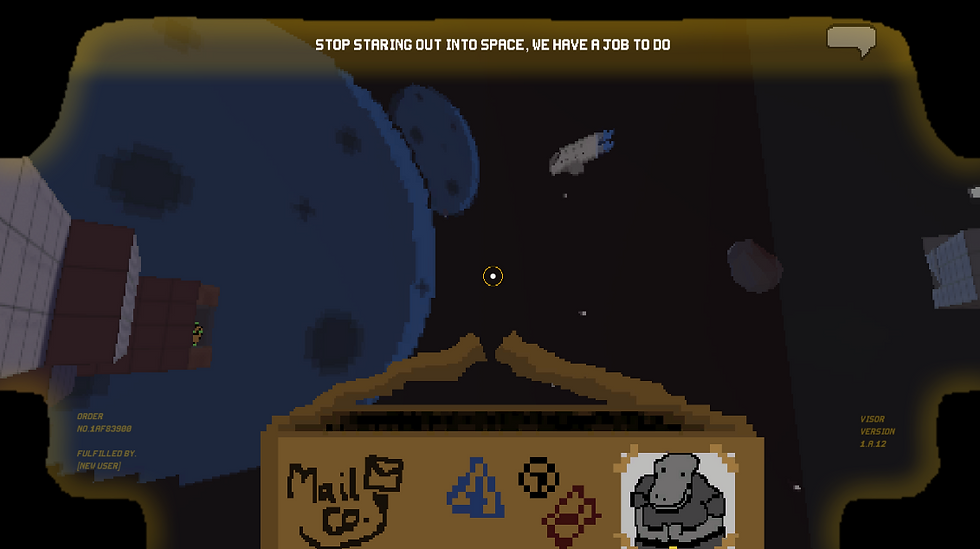QA Tester at Tag Games
Abertay Game Design and Production graduate 2021.
I’m highly interested in experimental game design and the creation of small games.

Honours Project
Exploring contextual design and player expectations in games.
This research project focused on the design of context-based mechanics and interaction, emphasising a feeling of character embodiment and a consistent environment. It explores how these aspects of design can help create a more cohesive player experience.
The project received an A grade.
The Prototype
Delivering space mail for your awful employer in a strange space station while your curious helmet talks to you.
The project aims are explored through the creation of a prototype focusing on mechanics and simple gameplay with the goal of a player experience that makes sense and feels grounded within a bizarre environment. The project also includes analysis of existing games and the creation of a ‘cheat sheet’ of recommendations around the explored concepts. These findings aim to be a useful resource for other practitioners studying these concepts.
Through both the practical development and the 'cheat sheet' this project aims to prove that a focus on player-set expectations, context and consistency can make the bizarre seem rational. It can also encourage exploration and aid in the creation of an enjoyable user experience.




Making the bizarre seem reasonable
Key parts of the prototype and their function

The Itch.io page
Onboarding the narrative
The Itch.io page is used to 'onboard' the player before downloading and playing the game. The page is presented as a scrolling software screen detailing information about the player's helmet as well as their current delivery task.
Keeping the initial approach thematically and contextually linked with the game has the goal of laying out player expectations before the game starts.
The Visor
Worldbuilding and character
As worldbuilding – how the player passively interacts with and learns about their surroundings.
As a character - personifying the visor, rather than keeping it cold and computer like seemed to have a positive effect on both player satisfaction as well as encouraging exploration.


The Station
Exploration and navigation
Exploration of the station is encouraged primarily through the visor. Players were seen to seek out new visor descriptions. This, along with some light in-world guidance (visual and audio) encourages exploration without explicit handholding.
Exploration
Wandering the station
Having a variety of areas and inhabitants, even with the station being so small, allows for a feeling of player freedom and discovery.
For example, a club similar to the one in early project game jam game 'Party Crasher' can be found in the station.


Threats
If it looks dangerous then it probably is
The station includes two sources of threat for players. A pool of acid and an airlock. Each will damage the player's suit and will factor into the end result.
While simple, it hopefully has the effect of helping the station feel more consistent in that every area that can be seen can be either explored physically or interacted with. The airlock can be seen and entered – so why not let the player shoot themselves out it?
The Box
Game feel
The box that the player delivers acts as both a form of visual feedback for the player's movement and an in-world UI element showing the mail recipient the player is looking for.


The inhabitants
Making a lively station
The station has a variety of inhabitants. While the player only interacts with one of them directly, they can 'passively' interact with each inhabitant through the visor. This give some feeling of life to the station and encourages players to explore the station and approach NPCs.


